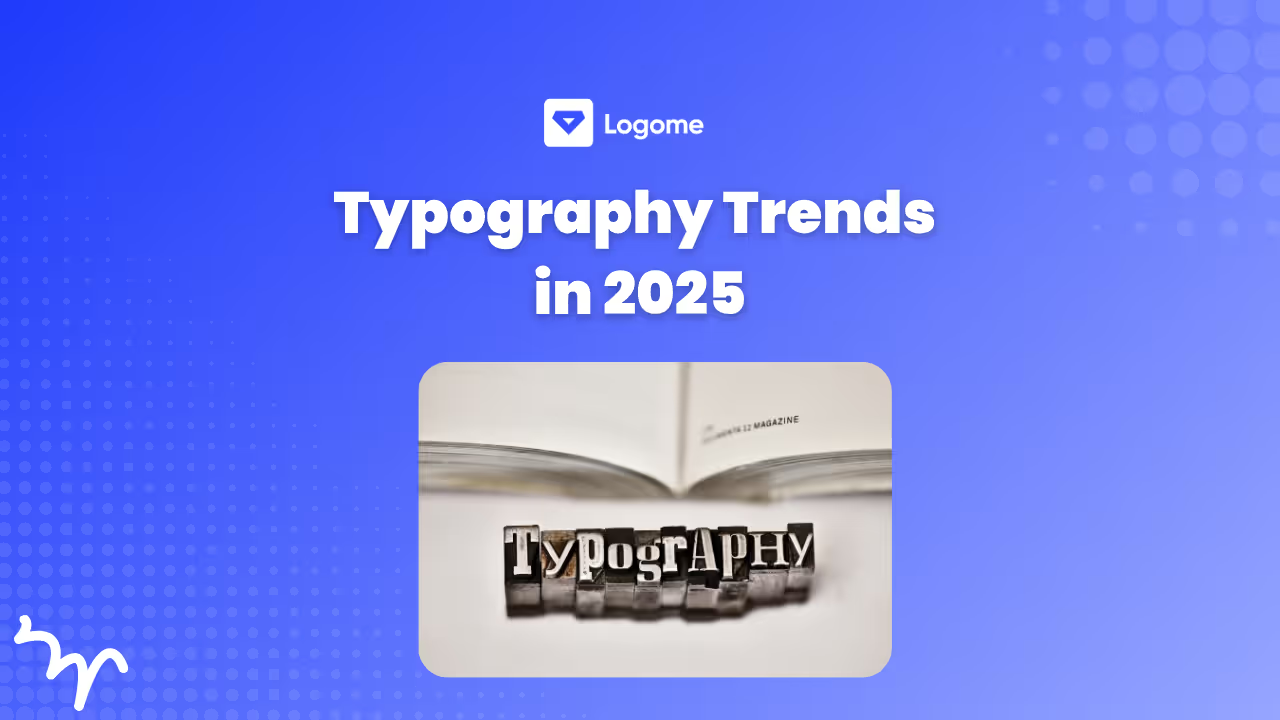1970s Logos: Timeless Branding and Design Trends
Discover the most iconic 1970s logos, design trends, and how they influenced modern branding. Learn from the era's creative brilliance with famous examples.
Discover the most iconic 1970s logos, design trends, and how they influenced modern branding. Learn from the era's creative brilliance with famous examples.

The 1970s was a transformative decade in terms of both cultural shifts and design innovation. From vibrant colors to bold typography, 1970s logos are still regarded as some of the most iconic and influential in the history of branding. The era saw the rise of brands that would go on to dominate industries for decades, and the logos they created still resonate today.
Whether you're an aspiring designer or simply curious about the history of iconic branding, this article explores the most famous logos of the 1970s, their design principles, and their impact on modern branding. We'll look at the best logos from the 1970s, analyze the design trends that defined the era, and discuss the lessons that can be drawn from this period of creative brilliance.
Before we dive into specific logos, it’s essential to understand the cultural backdrop of the 1970s, as it had a significant influence on design trends.
The 1970s were marked by dramatic shifts in social, political, and cultural dynamics. The world was grappling with the aftermath of the 1960s, a decade defined by counterculture, rebellion, and the rise of the hippie movement. In the 1970s, this gave way to more experimentation and expression in the world of design. There was a sense of optimism, innovation, and change, especially in the context of technology, pop culture, and advertising. Here’s a deeper look at the cultural trends that influenced 1970s logos:
Understanding these trends is key to appreciating the logos created during the decade, as they were as much about reflecting the era’s spirit as they were about branding.
Now, let’s take a closer look at some of the most iconic logos from the 1970s. These logos not only defined the brands they represented but also set the stage for modern branding and design.

One of the most famous logos to come out of the 1970s was Apple’s rainbow-colored apple, designed by Rob Janoff. Apple’s logo is an enduring symbol of the brand's commitment to innovation and creativity. The colorful stripes of the apple represented the company's goal of making personal computing accessible to the masses. The use of the rainbow palette was a bold choice, making the logo stand out among the more conservative designs of the time.

Nike’s swoosh logo, designed by graphic designer Carolyn Davidson, is one of the most iconic logos of all time. Originally designed for just $35, the swoosh represents speed, movement, and victory. Its simple, fluid shape became synonymous with Nike's dedication to athletic performance.

John Pasche’s “Tongue and Lips” logo for The Rolling Stones is another unforgettable 1970s design. The exaggerated, open mouth with a tongue sticking out represents the rebellious and energetic spirit of the band. The logo was created during the height of the band’s popularity and has become a cultural symbol of rock 'n' roll.

NASA's "worm" logo, designed by Danne & Blackburn, was introduced in 1975 and quickly became iconic. The logo featured sleek, futuristic typography that was meant to evoke a sense of space-age progress and technological sophistication. It was designed to be more modern than the previous logo, reflecting NASA's ambitions during the space race era.

The Polaroid logo from the 1970s is a perfect example of branding that emphasizes simplicity and innovation. The iconic rainbow stripes of the logo became synonymous with instant photography, representing the fun and instant gratification that Polaroid’s products provided. The use of bright, bold colors reflected the excitement of the era.

The 1973 redesign of the Pepsi logo introduced a new globe symbol, marking a significant shift from the previous bottle-cap motif. This logo was designed by the famous design firm, the Arnell Group, and was part of Pepsi’s effort to modernize and differentiate itself from Coca-Cola.

IBM’s 1972 logo, designed by Paul Rand, is one of the most recognizable corporate logos in the world. The logo consists of a simple, bold wordmark featuring horizontal stripes, symbolizing the company's commitment to innovation and precision in the technology industry. The design conveyed both strength and modernity, fitting for a company that was on the cutting edge of computing technology.
The logos from the 1970s were revolutionary in terms of design, and many of the principles used then are still relevant today. Here are some key design trends that emerged in the 1970s:
The 1970s marked a shift from complex, ornate designs to simpler, more impactful logos. Brands began to recognize the power of simplicity, using clean lines, strong shapes, and minimalistic elements to communicate their message effectively.
Chunky, rounded fonts were all the rage during the 1970s. The use of these bold typefaces helped logos stand out and made them more recognizable. Many logos, like Nike’s swoosh or the Rolling Stones’ logo, rely on bold, easy-to-read typography to leave a lasting impression.
Colors in the 1970s were often bright, bold, and highly contrasting. Earthy tones such as mustard yellow, avocado green, and burnt orange became popular, reflecting the environmental consciousness of the time. These bold colors made logos more eye-catching and helped them stand out in a crowded marketplace.
The influence of psychedelic art was seen in the swirling patterns and vibrant colors of many logos from the 1970s. These logos were designed to be visually stimulating and evoke a sense of fun and creativity. This trend was especially prevalent in industries related to music, fashion, and culture.
The logos created in the 1970s continue to hold significant relevance in the modern branding landscape due to several key factors. While many design trends have come and gone, the logos from this era have remained enduring symbols for their respective brands. Here's a closer look at why 1970s logos are still influential and how the design principles of that time continue to shape contemporary branding.
One of the primary reasons 1970s logos have remained relevant is that they embraced design principles that transcend trends. While the '70s were known for bold experimentation in colors, typography, and shapes, the logos that emerged during this period were grounded in timeless design fundamentals.
These design principles are still relevant today because they focus on clarity, strong visual impact, and a connection to the brand’s identity and values, regardless of the time period.
Logos from the 1970s are also timeless because they have been able to adapt seamlessly to new media and technologies. In today’s digital age, where branding extends across social media, websites, and mobile apps, logos that were designed with simplicity in mind, like those from the 1970s, continue to be effective in all formats.
For example:
In contrast, more complex logos from previous decades may struggle to maintain their effectiveness in smaller or less traditional mediums. The adaptability of 1970s logos ensures that they continue to perform well across new technologies and platforms.
The design trends of the 1970s continue to influence modern branding. Many contemporary logos still draw from the visual language and design principles that made 1970s logos so memorable.
Perhaps the most important reason 1970s logos remain relevant today is their ability to create lasting brand recognition. When a logo successfully conveys a brand’s ethos, values, and personality, it becomes ingrained in the cultural consciousness. The 1970s logos we know today became ingrained symbols for their companies not just because of their design but because they stood for something larger.
These logos are instantly recognizable and are associated with positive brand identities. Their simplicity, cultural relevance, and emotional connection have made them enduring symbols that continue to be valuable assets to their respective brands.
One of the most powerful reasons that 1970s logos have remained relevant is the emotional connection they’ve established with audiences over time. Logos like The Rolling Stones’ "Tongue and Lips" or Pepsi Globe aren’t just symbols of the brands—they’re cultural icons that evoke emotion.
These logos don’t just represent products; they represent values, identities, and experiences that resonate with consumers. That emotional connection is a key driver of their ongoing relevance and importance in modern branding.
Inspired by the enduring designs of the 1970s? You too can create a logo that stands the test of time. By following the principles established in the 1970s, you can craft a design that resonates with audiences and reflects your brand’s values. Consider using tools like Logome to easily create logos that are both modern and timeless.
Some tips to keep in mind:
The 1970s were a groundbreaking time for logo design, and the logos created during that decade continue to influence branding today. From Apple’s iconic rainbow logo to Nike’s powerful swoosh, these designs demonstrate how effective simplicity, boldness, and relevance to cultural trends can be. As brands continue to evolve, the timeless principles of 1970s logo design will continue to inspire the next generation of logos.
To create your own iconic logo, tools like Logome can help you design something unique and memorable, drawing on the enduring lessons from the 1970s.
1970s logos were unique due to their bold, minimalist designs, the use of vibrant colors, and a strong connection to cultural trends like the psychedelic movement, technological advancements, and the rise of counterculture.
The Nike Swoosh and Apple’s rainbow logo are considered two of the most iconic logos from the 1970s. Both designs have become synonymous with their brands and have stood the test of time, continuing to influence modern branding.
The counterculture movement, the rise of technology, and environmental awareness all influenced 1970s logo design. These movements encouraged the use of bold colors, clean lines, and symbolic imagery that reflected the cultural shift of the time.
1970s logos are still relevant because they embraced timeless design principles such as simplicity, boldness, and emotional resonance. These logos remain iconic due to their cultural impact and adaptability across various media.
Yes, you can create a 1970s-inspired logo by focusing on bold typography, vibrant color schemes, and simplicity. Many modern design tools, like Logome, can help you create logos with a retro feel while staying true to your brand’s identity.



Discover how 500,000+ businesses and creators are using our AI logo maker in their Logo creation.



